#Peinaleopolynoe orphanae
Explore tagged Tumblr posts
Text
Peinaleopolynoe orphanae
aka the Elvis Worm

Woke up this #WormWednesday and decided I needed to make the worms I want to see in the world. This appliqué and embroidery friend is Peinaleopolynoe orphanae, a deep sea scaleworm. These worms can be found at whale falls, hydrothermal vents, and methane seeps - all some of my favorite habitats.
I wanted this piece to be really 3D and have playful tactile elements so I used some fuzzy fabric for the worm’s bristles and the scales are each hand cut out from a textile I created from ironing together felt, a glittery mesh, and a sheer holographic fabric. I attached the scales just at their bases where they are overlapped by other scales so you can rifle through them.
I used the reference image below from Hatch AS, Liew H, Hourdez S, Rouse GW (2020) to try and make this piece as life accurate as possible.

Let me know what you think and let me know what deep sea critters you think I should try to make next!
#deep sea#elvis worm#marine biology#marine life#sea creatures#ocean#my art#Peinaleopolynoe orphanae#scale worm#polychaete#ocean art#embroidery#applique#textile art
45 notes
·
View notes
Text
5 instances of Tremoctopus Violaceus (common blanket octopus)
2 instances? of Mnemiopsis LeiDyi (sea walnut)
1 instance of Alitta Virens ( king rag worm)
1 instance of Trachipterus arcticus (medetarenean dealfish)
1 instance of Rossia Pacifica (stuby squid)
1 instance of Antiopella Cristatus (crested aeolis)
4 instances of Cestum Veneris (venus girdle)
1 instance of Teuthowenia Pellucida (googly-eyed glass squid)
1 instance of Periphylla Periphylla (helmet jellyfish)
1 instance of Peinaleopolynoe Orphanae (elvis worm)
1 instance of Cyanea Capillata (lions mane jellyfish)
1 instance of Tomopteris (gossamer worm)
1 instance of Sepioteuthis Lessoniana (bigfin reef squid)
1 instance of Clione Limacina (sea angle)
Regretably the third image of the post has escaped my powers.
These creatures are primarily cephalopods, and centophora.

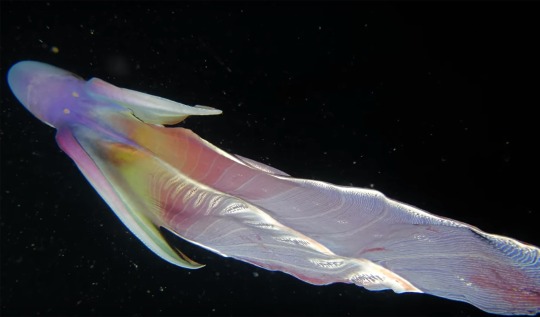
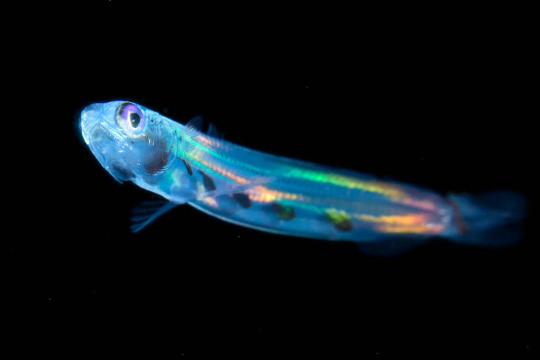
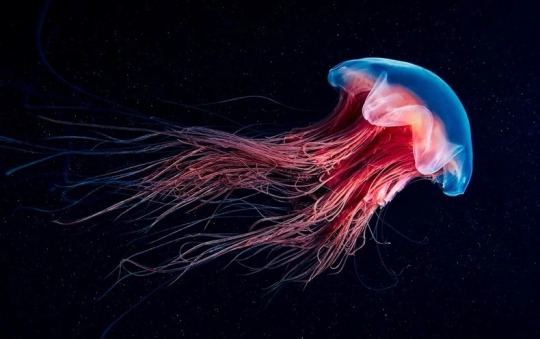
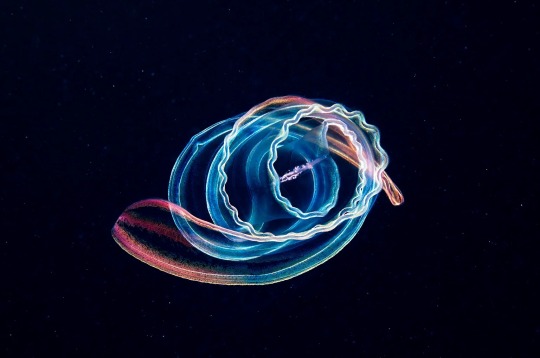

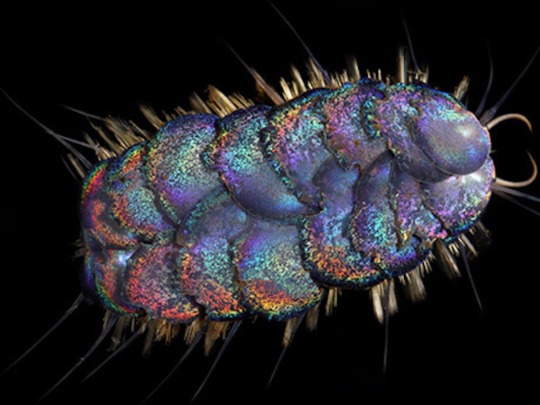
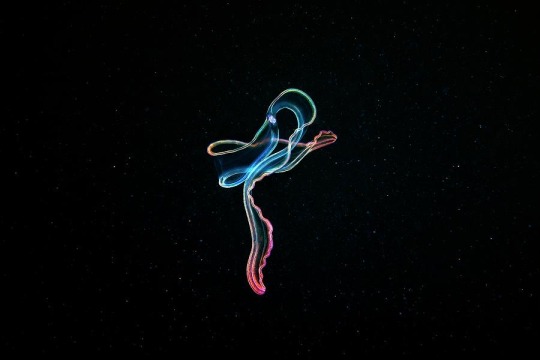

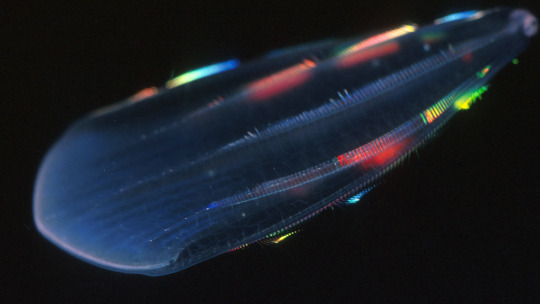


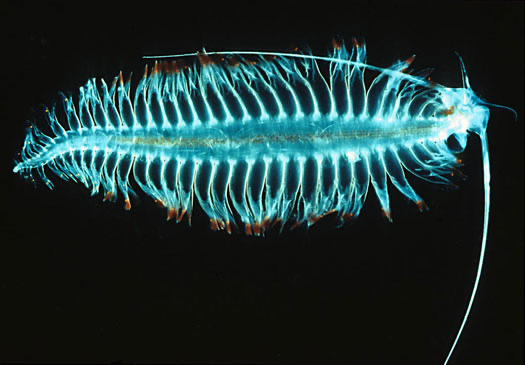
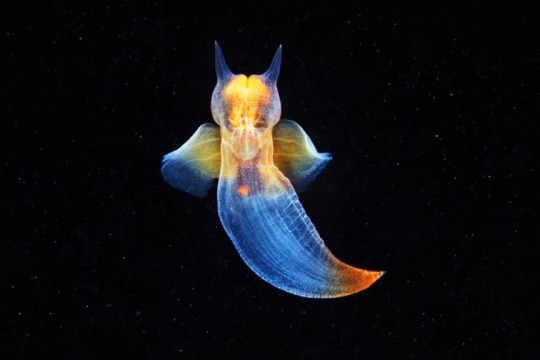
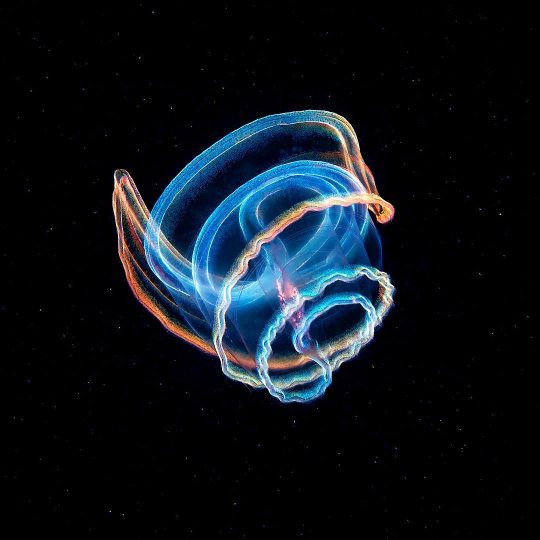
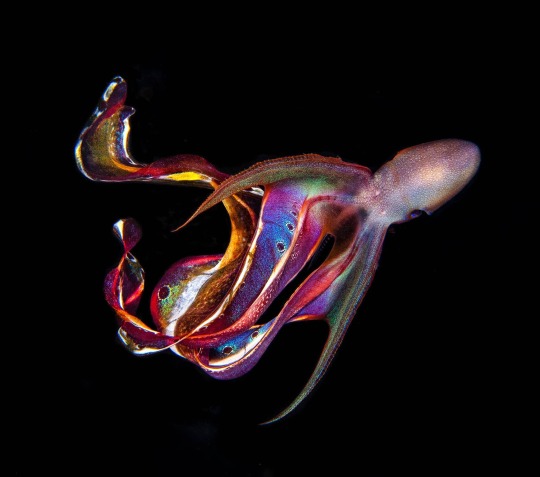
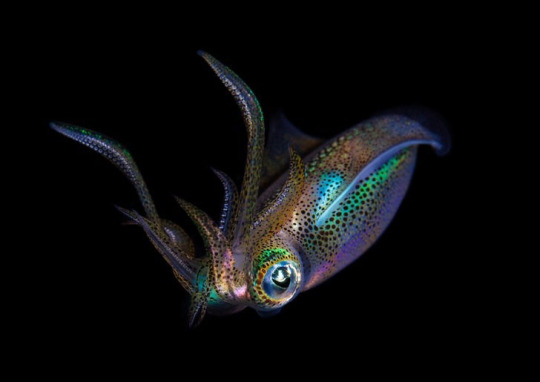
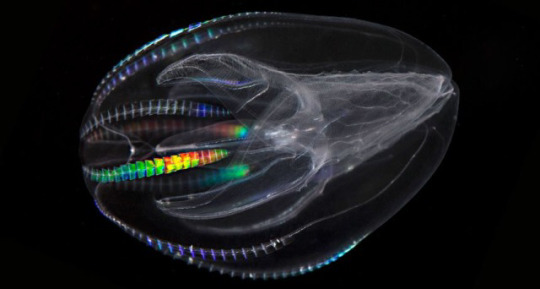

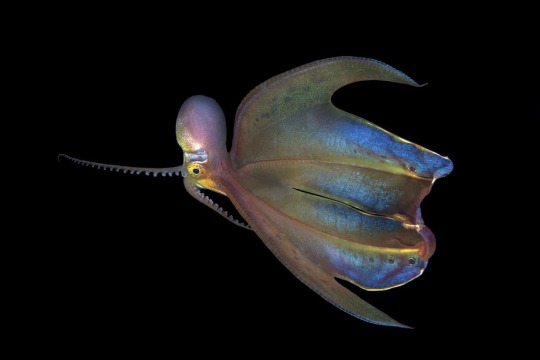
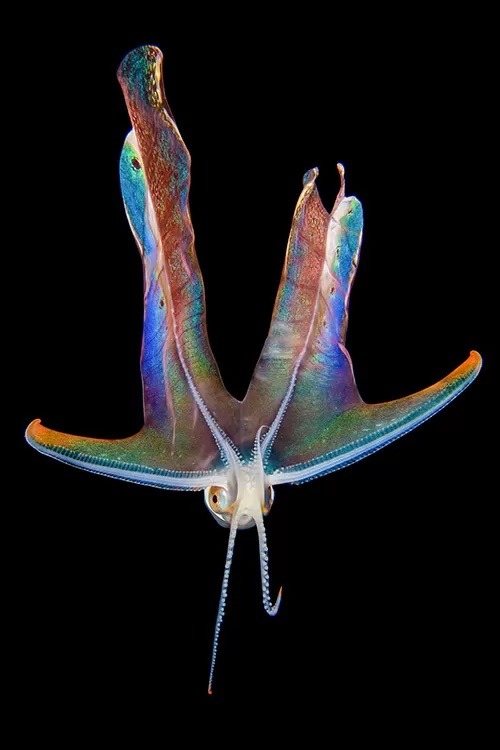
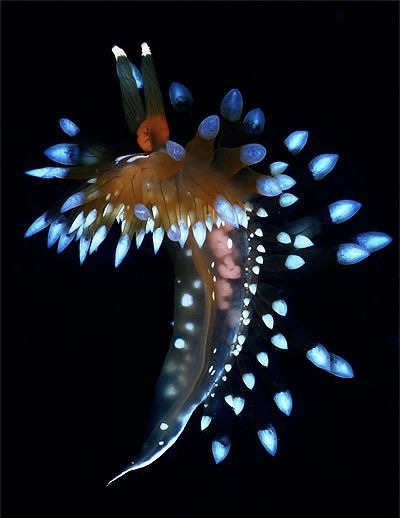

Oh to be an iridescent sea creature 💚 💙 💜
6K notes
·
View notes
Photo

Elvis Worms
Peinaleopolynoe orphanae, left, and Peinaleopolynoe elvisi are two of four new Elvis worms discovered by researchers, according to a study. They earned the nickname because of the sequin-like appearance of their shells.
Photo by Hatch AS, Liew H, Hourdez S, Rouse GW/ZooKeys
#hatch as#liew h#hourdez s#rouse gw#photographer#elvis worms#worms#peinaleopolynoe orphanae#peinaleopolynoe elvisi#nature
8 notes
·
View notes
Photo


New Worm Species with Jewel-Like Scales Discovered in Deep Ocean Darkness
A mysterious video shows worms fighting and dancing the "jitterbug."
Some of the most brilliant colors in the animal kingdom belong to worms that live in the dark and have no eyes.
Researchers described four new species of deep-sea worms in a paper published today in the journal ZooKeys. They have been collecting the worms for years, but only recently teased apart their species relationships using genetics.
"Our nickname for them was Elvis worms because they look like sequins on an Elvis jumpsuit," said Greg Rouse, a marine biologist at the Scripps Institution of Oceanography at the University of California, San Diego.
The new species are Peinaleopolynoe goffrediae, named for marine biologist Shana Goffredi; P. mineoi, named for the father of biotechnologist Chrysa Mineo, who helped fund the research; P. orphanae, named for geobiologist Victoria Orphan; and P. elvisi, whose name is self-explanatory. They belong to a group known as scale worms, distant relatives of earthworms that are covered in large, overlapping plates...
Read more: https://www.insidescience.org/news/new-worm-species-jewel-scales-discovered-deep-ocean-darkness
1K notes
·
View notes
Text
Rieccoci con un altro episodio di vermi belli. Ti hanno insultato? Ti hanno dato del verme? Ebbene, sia, ma sarai tu a scegliere che verme essere!
Così come i vermi dell'edizione natalizia (Spirobranchus giganteus) i vermi di cui parleremo oggi appartengono alla classe dei policheti (molte chete=setole, poste alla fine di ciascun parapodio). I nostri protagonisti sono i rappresentanti di quattro nuove specie del genere Peinaleopolynoe, comunemente detti "hungry scale worms", scoperte giusto giusto un anno fa. Questi policheti vivono a profondità altissime, nell'oscurità totale, e siccome li si è trovati lì, si pensa che la loro principale fonte di cibo siano le whale fall -che sono? esattamente quello che sembra: la caduta sul fondale della carcassa di una balena ma comunque pure di altri animali, se capita eh- quindi 'sti poveretti devono aspettare letteralmente che gli piova il cibo dal cielo, perciò "hungry"; "scale" invece indica le elitre (sì esatto, come quelle dei coleotteri), delle "scaglie" che ricoprono il corpo del verme
OK STEFANIA, BASTA PARLARE, FACCI CAPIRE CHE HANNO DI COSÌ BELLO QUESTI VERMI
E vabb eccoli:

sono sbrilluccicosiiiii, cuteee. Nomi:
A Peinaleopolynoe orphanae
B Peinaleopolynoe elvisi
C Peinaleopolynoe goffrediae
D Peinaleopolynoe mineoi
E c'è da notare che vivono tra i 2 e i 4km di profondità, quindi essere carinissimi non gli serve a niente, non li vede nessuno! Gli scienziati se lo sono pure chiesto perché fossero così colorati, ma non hanno trovato risposta; in compenso un* di loro nel paper accademico ufficialeeee ha scritto questa cosa e io glielo invidieró fin che campo

Non lasciatevi ingannare, però, they're cute but will fight e infatti se le danno di santa ragione, qua le frecce indicano i segni dei morsi


Guardate poi che fauci! Quelle di P. mineoi (sempre D) sono bellissime awskaksjsk. Da notare, poi, che la bocca è estroflettibile, quindi viene spinta fuori per attaccare il nemico. Potevo forse esimermi dall'andare a cercare un video?... naturalmente no, e infatti
ok mi scocciava rileggere il post, trovare una conclusione etc, quindi per oggi è tutto linea in studio
#vermi belli#post scritto un po' col culo e poi 'esimermi' lmao#la prima volta che l'avevo scritto era molto più professionale uffi#ma era un reblog e tumblr mi ha avvisato solo dopo essersi mangiato il post che non si possono mettere video nei reblog#ಥ‿���#animali
23 notes
·
View notes
Text
Open Starter (Inquisition Verse)
Souveri looked thoughtful as he shook a small vial of water sampled from the Storm Coast as per his request. Holding it against a lantern's light, he peered into the water, as if he could read an entire book in there. Then he hummed, put the vial down in a stand and picked up a different vial to repeat the process.
"Did you know", he asked no one in particular, "That deep at the dark bottom of the sea live worms, that shine and shimmer like pretty gems. Covered in glittery scales like sequins that twinkle in the colors of the rainbow. Pretty peculiar, if one considers that no light reaches that far down to actually make their glittery exterior visible. To think, that there are creatures, as pretty as a dazzling festival at full moon and they'll never know, because they cannot even see themselves."
((If you want to see those real existing worms, google "Peinaleopolynoe goffrediae", "P. mineoi", "P. orphanae", or "P. elvisi"))
3 notes
·
View notes
Link
A new look at the critters known as “Elvis worms” has the scale worm family all shook up.
These deep-sea dwellers flaunt glittery, iridescent scales reminiscent of the sequins on Elvis’ iconic jumpsuits (SN: 1/23/20). “For a while, we thought there was just one kind of Elvis worm,” says Greg Rouse, a marine biologist at the Scripps Institution of Oceanography in La Jolla, Calif. But analysis of the creatures’ genetic makeup shows that Elvis worms comprise four species of scale worm, Rouse and colleagues report May 12 in ZooKeys.
Rouse’s team compared the genetic material of different Elvis worms with each other, and with DNA from other scale worm species. This analysis places Elvis worms in the Peinaleopolynoe genus of scale worms, which includes two other known species — one found off the coast of Spain, the other off California.
youtube
A new genetic analysis of the deep-sea creatures nicknamed “Elvis worms” reveals that that these iridescent creatures include four separate species. The Elvis worms seen in this video belong to the species Peinaleopolynoe orphanae, which mostly sport glittery blue scales, but also come in other colors, like black and red. These worms may look dainty, but they fight dirty, chomping at each other’s scales when they get into skirmishes.
The four newly identified Elvis worm species are scattered across the Pacific, from P. elvisi and P. goffrediae in Monterey Canyon off California to P. orphanae in the Gulf of California by Mexico and P. mineoi near Costa Rica.
These deep-sea Elvis impersonators share some common traits, such as nine pairs of scales. But each species has its own distinct flare. P. elvisi’s gold and pink iridescent color scheme earned it the honor of keeping the worms’ namesake in its official title. P. orphanae, on the other hand, mostly sports rainbow-sparkled scales of a bluish hue.
The researchers don’t know why Elvis worms have evolved such eye-catching scales, since the animals live in the dark, deep sea. It could just be a side effect of developing thicker scales over time, which happen to refract more light, Rouse says. Thicker scales could come in handy in a fight, since Elvis worms are apparently biters, a behavior discovered while watching a worm skirmish. “Suddenly, they started doing this amazing jitterbugging — wiggling, and then fighting and biting each other” on their scales, Rouse says. “No one’s ever seen any behavior like this in scale worms.”
#multimedia#science#scied#sciblr#Elvis worms#deep-sea creatures#scale worms#marine biology#new species
55 notes
·
View notes
Text
These 'Elvis Worms' Shimmer and Sparkle—and Fight Rough
https://sciencespies.com/news/these-elvis-worms-shimmer-and-sparkle-and-fight-rough/
These 'Elvis Worms' Shimmer and Sparkle—and Fight Rough
Shimmering in lavender, blue, orange and pink, deep-sea dwelling “Elvis worms” sport shiny scales that resemble the sequined jumpsuits worn by their namesake: rock ‘n’ roll icon Elvis Presley.
This month, a team of researchers from the Scripps Institution of Oceanography at the University of California San Diego described four new species of the worms in a paper in the scientific journal ZooKeys.
The team used DNA sequencing to place the worms in the Peinaleopolynoe genus, a group of scale worms distantly related to earthworms, per a statement. The researchers dubbed the newly classified species P. goffrediae, after marine biologist Shana Goffredi; P. mineoi, after the donors who helped fund the research; and P. orphanae, named for geobiologist Victoria Orphan. The fourth species’ shimmery pink and gold scales earned it the name P. elvisi, a tribute to the King of Rock ‘n’ Roll.
Using the manned research submarine Alvin and remotely operated vehicles, the team collected worm specimens from the bottom of the eastern Pacific Ocean, the Gulf of Mexico and near Costa Rica. They discovered many worms feasting on the fallen carcasses of whales and along hydrothermal vents, reports Nala Rogers at Inside Science.
“[The worms] looked beautiful and iridescent. And there was a lot of shading in their colors,” Avery Hatch, a doctoral student at UCSD’s Scripps Institution of Oceanography and lead author on the study, tells Gary Robbins at the San Diego Union-Tribune.
youtube
These worms don’t have eyes to see their own scales, and it’s pitch-black on the ocean floor anyways, Robbins reports. Researchers collected the worms at or below 3,281 feet—too deep for sunlight to penetrate. Scientists have yet to parse what—if any—function the worms’ iridescent scales serve, according to Inside Science.
Researchers also recorded a surprising, previously unrecorded behavior: a battle between two P. orphanae worms. Scientists were observing the worms when they started fighting one another, Maria Temming reports for Science News. “Suddenly, they started doing this amazing jitterbugging — wiggling, and then fighting and biting each other [on their scales]” says Greg Rouse, a marine biologist and a co-author on the study. “No one’s ever seen any behavior like this in scale worms.”
This observed behavior helps explains why the scales of P. orphanae specimens bore scrapes and other signs of damage, according to the researchers. “For several years, it was a mystery as to why the scales of P. orphanae specimens were often drastically damaged, and we reasoned that it may have occurred during the collection process,” Hatch says in the statement. “Now that we have observed the entertaining in situ fighting behavior of P. orphanae, we understand that these animals are actually biting off chunks of one another’s scales.”
Victoria Orphan, the biologist and namesake of the fighting worms, observed the two creatures duking it out in real time. “I had seen them as these sort of passive, cute worms,” she tells Inside Science. “But they actually were taking chunks out of each other.”
Like this article? SIGN UP for our newsletter
#News
0 notes
Text
New species of scaly, deep-sea worms named after Elvis have been found
A new look at the critters known as “Elvis worms” has the scale worm family all shook up.
These deep-sea dwellers flaunt glittery, iridescent scales reminiscent of the sequins on Elvis’ iconic jumpsuits (SN: 1/23/20). “For a while, we thought there was just one kind of Elvis worm,” says Greg Rouse, a marine biologist at the Scripps Institution of Oceanography in La Jolla, Calif. But analysis of the creatures’ genetic makeup shows that Elvis worms comprise four species of scale worm, Rouse and colleagues report May 12 in ZooKeys.
Rouse’s team compared the genetic material of different Elvis worms with each other, and with DNA from other scale worm species. This analysis places Elvis worms in the Peinaleopolynoe genus of scale worms, which includes two other known species — one found off the coast of Spain, the other off California.
youtube
A new genetic analysis of the deep-sea creatures nicknamed “Elvis worms” reveals that that these iridescent creatures include four separate species. The Elvis worms seen in this video belong to the species Peinaleopolynoe orphanae, which mostly sport glittery blue scales, but also come in other colors, like black and red. These worms may look dainty, but they fight dirty, chomping at each other’s scales when they get into skirmishes.
The four newly identified Elvis worm species are scattered across the Pacific, from P. elvisi and P. goffrediae in Monterey Canyon off California to P. orphanae in the Gulf of California by Mexico and P. mineoi near Costa Rica.
These deep-sea Elvis impersonators share some common traits, such as nine pairs of scales. But each species has its own distinct flare. P. elvisi’s gold and pink iridescent color scheme earned it the honor of keeping the worms’ namesake in its official title. P. orphanae, on the other hand, mostly sports rainbow-sparkled scales of a bluish hue.
The researchers don’t know why Elvis worms have evolved such eye-catching scales, since the animals live in the dark, deep sea. It could just be a side effect of developing thicker scales over time, which happen to refract more light, Rouse says. Thicker scales could come in handy in a fight, since Elvis worms are apparently biters, a behavior discovered while watching a worm skirmish. “Suddenly, they started doing this amazing jitterbugging — wiggling, and then fighting and biting each other” on their scales, Rouse says. “No one’s ever seen any behavior like this in scale worms.”
from Tips By Frank https://www.sciencenews.org/article/deep-sea-worms-elvis-species
0 notes
Text
If you've got disposable income to throw at cool wearable art, consider snagging this deep sea Elvis Worm beanie. If you've got any well off ocean obsessed followers, maybe do me a solid and send this their way?
Peinaleopolynoe orphanae
aka the Elvis Worm

Woke up this #WormWednesday and decided I needed to make the worms I want to see in the world. This appliqué and embroidery friend is Peinaleopolynoe orphanae, a deep sea scaleworm. These worms can be found at whale falls, hydrothermal vents, and methane seeps - all some of my favorite habitats.
I wanted this piece to be really 3D and have playful tactile elements so I used some fuzzy fabric for the worm’s bristles and the scales are each hand cut out from a textile I created from ironing together felt, a glittery mesh, and a sheer holographic fabric. I attached the scales just at their bases where they are overlapped by other scales so you can rifle through them.
I used the reference image below from Hatch AS, Liew H, Hourdez S, Rouse GW (2020) to try and make this piece as life accurate as possible.

Let me know what you think and let me know what deep sea critters you think I should try to make next!
45 notes
·
View notes